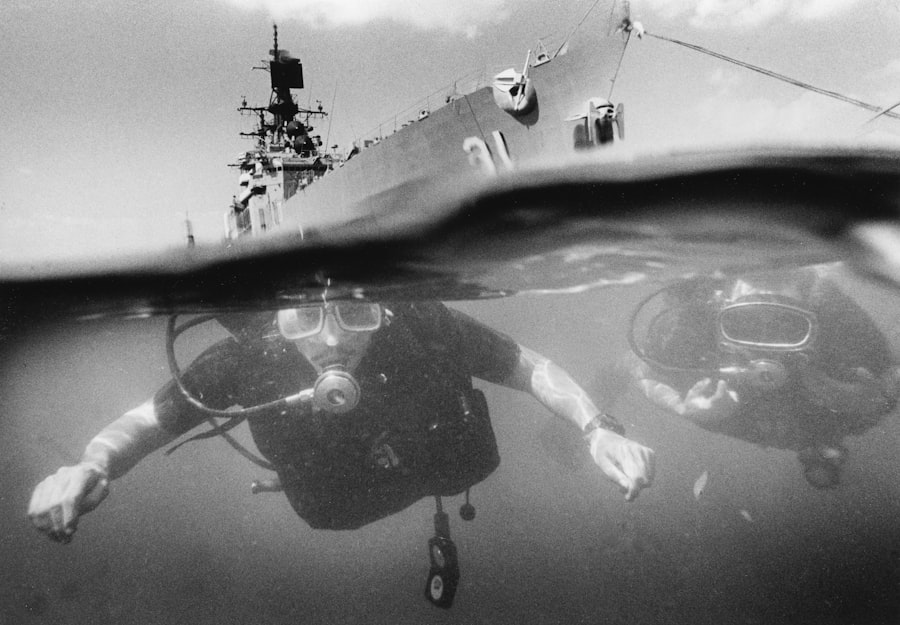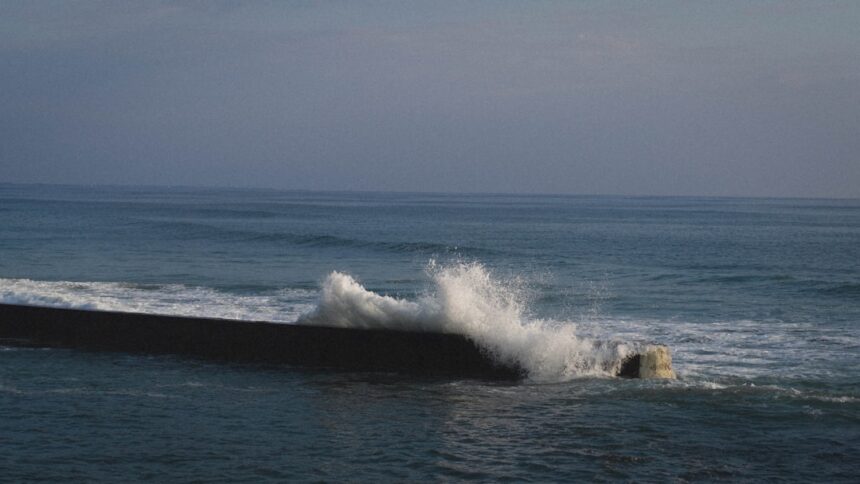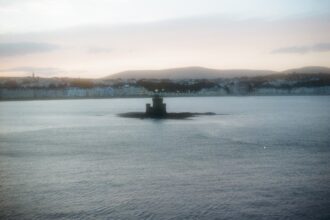Silent submarine warfare represents a critical evolution in naval strategy, emphasizing stealth and subterfuge over brute force. This approach has transformed the dynamics of maritime conflict, allowing submarines to operate undetected while gathering intelligence or launching surprise attacks. The concept of silent warfare is not merely about remaining hidden; it encompasses a comprehensive understanding of the oceanic environment, advanced technology, and the psychological aspects of naval engagements.
As nations invest heavily in their underwater fleets, the significance of silent operations becomes increasingly paramount. The historical context of submarine warfare reveals a trajectory marked by innovation and adaptation. From the early days of World War I, when submarines were primarily used for blockades, to the Cold War era’s cat-and-mouse games between superpowers, the evolution of submarine tactics has been profound.
Today, silent submarine warfare is characterized by a blend of traditional naval strategies and cutting-edge technology, making it a focal point for modern military planners. The ability to remain undetected while executing missions has become a defining feature of contemporary naval power.
Key Takeaways
- Silent submarine warfare relies on acoustic stealth tactics to avoid detection by enemy forces.
- Acoustic signature plays a crucial role in submarine detection and can be minimized through advanced technologies and strategic maneuvers.
- Sonar technology is essential in submarine warfare for detecting and tracking enemy submarines.
- Strategies for minimizing acoustic signature include careful navigation, reducing machinery noise, and using sound-absorbing materials.
- Future developments in acoustic stealth technology will continue to shape the future of silent submarine warfare, but challenges and limitations still exist.
The Importance of Acoustic Stealth Tactics
Acoustic stealth tactics are essential for submarines to maintain their operational effectiveness in hostile environments. The ability to minimize noise emissions allows submarines to evade detection by enemy sonar systems, which are designed to pick up sound waves generated by vessels in the water. This stealth capability is not just a tactical advantage; it is a matter of survival for submarines operating in contested waters.
The quieter a submarine can be, the more likely it is to achieve its objectives without being compromised. Moreover, acoustic stealth tactics extend beyond mere evasion; they also enhance the submarine’s offensive capabilities. By remaining undetected, submarines can position themselves strategically to launch surprise attacks on enemy vessels or installations.
This element of surprise can shift the balance of power in naval engagements, making acoustic stealth a cornerstone of modern maritime warfare. As adversaries develop increasingly sophisticated detection technologies, the importance of maintaining acoustic stealth becomes even more pronounced.
Understanding Acoustic Signature and its Impact on Submarine Detection

The acoustic signature of a submarine refers to the unique sound profile it generates while operating underwater. This signature is influenced by various factors, including the submarine’s design, propulsion system, and operational activities. Understanding and managing this signature is crucial for submarines seeking to avoid detection.
Each vessel produces a distinct sound that can be analyzed by sonar systems, allowing adversaries to identify and track them. The impact of acoustic signature on submarine detection cannot be overstated. A loud or easily recognizable signature increases the likelihood of detection by enemy forces, rendering stealth operations ineffective.
Conversely, a well-managed acoustic signature can provide submarines with the necessary cover to operate undetected. This delicate balance between operational noise and stealth is a constant challenge for submarine crews and engineers alike, necessitating ongoing research and development in acoustic management techniques.
Advanced Technologies for Acoustic Stealth
| Technology | Stealth Level | Effectiveness |
|---|---|---|
| Acoustic Absorbing Materials | High | Very effective in reducing acoustic signature |
| Shape Optimization | Medium | Helps in reducing radar cross-section and acoustic signature |
| Noise Reduction Techniques | High | Significantly reduces acoustic emissions |
| Active Noise Cancellation | High | Effectively cancels out unwanted acoustic signals |
The pursuit of acoustic stealth has driven significant advancements in submarine technology. Innovations in materials science have led to the development of quieter hull designs and sound-absorbing coatings that reduce noise emissions. These materials are engineered to dampen vibrations and minimize the sound produced by machinery and water flow around the submarine’s structure.
As a result, modern submarines are equipped with features that enhance their stealth capabilities, allowing them to operate more effectively in hostile environments. In addition to materials advancements, propulsion systems have also evolved to support acoustic stealth. Electric propulsion systems, such as those utilizing lithium-ion batteries or fuel cells, produce significantly less noise compared to traditional diesel engines.
These systems enable submarines to operate silently for extended periods, enhancing their ability to remain undetected during critical missions. The integration of advanced technologies into submarine design underscores the ongoing commitment to achieving superior acoustic stealth in modern naval warfare.
The Role of Sonar in Submarine Warfare
Sonar technology plays a pivotal role in both submarine detection and evasion strategies. Active sonar systems emit sound waves into the water and analyze the echoes that bounce back from objects, allowing operators to detect and locate submarines or other vessels. However, active sonar can also reveal the position of the emitting vessel, making it a double-edged sword in underwater engagements.
As such, submarines often rely on passive sonar systems that listen for sounds generated by other vessels without revealing their own location. The effectiveness of sonar technology is continually evolving, with advancements in signal processing and data analysis enhancing detection capabilities. Modern sonar systems can differentiate between various types of underwater sounds, improving target identification and tracking accuracy.
This technological arms race between submarines and sonar systems underscores the importance of acoustic stealth tactics; as detection methods become more sophisticated, submarines must adapt their strategies to maintain an edge in underwater warfare.
Strategies for Minimizing Acoustic Signature

Minimizing acoustic signature involves a multifaceted approach that encompasses design, operational practices, and technological innovations. One key strategy is optimizing hull design to reduce hydrodynamic noise generated during movement through water. Streamlined shapes and specialized coatings can significantly decrease turbulence and noise production, enhancing stealth capabilities.
Operational practices also play a crucial role in minimizing acoustic signature. Submarine crews are trained to adopt specific maneuvers that reduce noise emissions during critical phases of operation, such as when approaching enemy waters or conducting surveillance missions. Additionally, maintaining equipment in optimal condition is essential; worn or malfunctioning machinery can produce excessive noise that compromises stealth efforts.
By implementing these strategies, submarines can effectively manage their acoustic signatures and enhance their chances of remaining undetected.
Case Studies of Successful Acoustic Stealth Operations
Several historical case studies illustrate the effectiveness of acoustic stealth operations in naval warfare. One notable example is the U.S. Navy’s use of nuclear-powered submarines during the Cold War.
These vessels were designed with advanced acoustic stealth features that allowed them to operate undetected while monitoring Soviet naval activities. Their ability to remain hidden enabled them to gather critical intelligence and maintain a strategic advantage over adversaries. Another significant case study involves the Israeli Navy’s operations in the Mediterranean Sea.
Israeli submarines have successfully conducted covert missions against enemy targets while employing advanced acoustic stealth tactics. By leveraging their knowledge of local underwater geography and utilizing cutting-edge technology, these submarines have demonstrated the effectiveness of silent operations in achieving strategic objectives without detection.
Challenges and Limitations of Acoustic Stealth Tactics
Despite advancements in technology and tactics, challenges remain in achieving complete acoustic stealth. One significant limitation is the inherent trade-off between speed and stealth; faster movements often generate more noise, making it difficult for submarines to maintain silence during critical operations. Additionally, environmental factors such as ocean currents and temperature layers can affect sound propagation, complicating detection efforts for both submarines and adversaries.
Moreover, as detection technologies continue to advance, submarines face an ongoing challenge in adapting their stealth strategies. New sonar systems equipped with artificial intelligence capabilities can analyze vast amounts of data quickly, increasing the likelihood of detecting even the quietest vessels. This technological arms race necessitates continuous innovation in acoustic management techniques and materials to ensure submarines remain effective in an evolving threat landscape.
Training and Education for Acoustic Stealth Operations
Training and education are vital components in preparing submarine crews for effective acoustic stealth operations. Submarine personnel undergo rigorous training programs that emphasize the importance of noise management and operational tactics designed to minimize acoustic signatures. This training includes simulations that replicate various underwater scenarios, allowing crews to practice stealth maneuvers under realistic conditions.
Furthermore, ongoing education is essential as new technologies emerge and operational tactics evolve. Submarine crews must stay informed about advancements in sonar technology and detection methods to adapt their strategies accordingly. By fostering a culture of continuous learning and adaptation within submarine forces, navies can enhance their operational effectiveness and maintain an edge in silent warfare.
Future Developments in Acoustic Stealth Technology
The future of acoustic stealth technology holds great promise as research continues to push the boundaries of what is possible in submarine design and operation. Emerging materials such as metamaterials may offer new avenues for reducing noise emissions while enhancing overall performance. These materials could revolutionize hull designs by providing unprecedented levels of sound absorption and manipulation.
Additionally, advancements in artificial intelligence may play a crucial role in optimizing submarine operations for acoustic stealth. AI-driven systems could analyze real-time data from onboard sensors to adjust operational parameters dynamically, ensuring that submarines maintain optimal stealth profiles throughout their missions. As these technologies develop, they will likely redefine the landscape of silent submarine warfare.
The Future of Silent Submarine Warfare
Silent submarine warfare represents a complex interplay between technology, strategy, and human skill. As nations continue to invest in their underwater capabilities, the importance of acoustic stealth will only grow more pronounced. The ongoing evolution of detection technologies presents both challenges and opportunities for submarine forces worldwide.
Looking ahead, the future of silent submarine warfare will be shaped by advancements in materials science, artificial intelligence, and operational tactics that prioritize stealth above all else. As navies adapt to an ever-changing maritime landscape, the principles of silent warfare will remain central to achieving strategic objectives while navigating the complexities of modern naval engagements. The commitment to innovation and adaptation will ensure that silent submarine warfare remains a formidable aspect of global military strategy for years to come.
In the realm of modern naval warfare, acoustic stealth technology plays a crucial role in submarine operations, allowing vessels to navigate undetected beneath the ocean’s surface. This technology involves the use of advanced materials and design techniques to minimize the noise emitted by submarines, making them less detectable by enemy sonar systems. For a deeper understanding of the intricacies involved in acoustic stealth and its impact on submarine warfare, you can explore a related article on this topic by visiting In The War Room. This resource provides valuable insights into the latest advancements and strategic implications of acoustic stealth in the context of global naval power dynamics.
WATCH THIS! America’s Nuclear Navy Was Born From Espionage
FAQs
What is acoustic stealth submarine warfare?
Acoustic stealth submarine warfare refers to the use of technology and tactics to minimize the acoustic signature of submarines, making them difficult for enemy forces to detect using sonar and other acoustic detection methods.
Why is acoustic stealth important in submarine warfare?
Acoustic stealth is important in submarine warfare because it allows submarines to operate covertly and evade detection by enemy forces. This gives submarines a strategic advantage in conducting surveillance, intelligence gathering, and potential offensive operations.
How do submarines achieve acoustic stealth?
Submarines achieve acoustic stealth through a combination of design features, such as hydrodynamic shaping and sound-absorbing materials, as well as advanced propulsion systems and quieting technologies. These measures help reduce the noise generated by the submarine, making it harder for enemy sonar systems to detect.
What are some challenges in maintaining acoustic stealth for submarines?
Challenges in maintaining acoustic stealth for submarines include managing the noise generated by onboard machinery, minimizing the impact of external factors such as water flow and marine life, and adapting to evolving enemy detection technologies.
What are some examples of acoustic stealth technologies used in submarines?
Examples of acoustic stealth technologies used in submarines include quiet propulsion systems, such as pump-jet and magnetohydrodynamic propulsion, as well as sound-absorbing coatings and materials to reduce the acoustic signature of the hull and internal components. Additionally, advanced noise reduction techniques and acoustic monitoring systems are employed to maintain stealth during operations.




